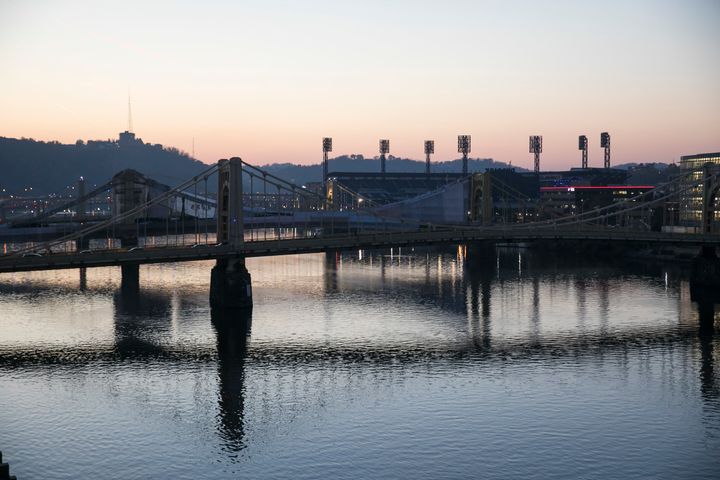
Downtown Pittsburgh at sunset
In Pittsburgh, innovation and imagination are brushing off the rust of an earlier era and ushering in a more prosperous future. Walking through the city today, you may pass a fully decked out TechShop makerspace, see one of Uber’s autonomous vehicles drive by, or perhaps even be attracted to a posting for one of the 1.28 million new jobs that will open over the next decade. Pittsburgh didn't get here by accident though--it was through hard work, perseverance, partnership, and most importantly leadership.
One thing is abundantly clear: Pittsburgh is a city actively preparing for the workforce needs of tomorrow. But those preparations aren’t something that came about overnight. In fact, it was only after facing a devastating economic downturn that the city started building bridges towards a brighter future.
A brief history
Throughout the late 19th and early 20th centuries, Pittsburgh industrialized quickly, at one time providing roughly half of all U.S. steel output. Steel mills provided well-paying blue collar jobs – and enough soot to brand the city with one of its many monikers, Soot City.
Between 1970 and 2000, Pittsburgh lost 40 percent of its population. The city was home to some of the greatest labor disputes in American history. This had a direct impact on the city’s population – in 1950, Pittsburgh boasted a population of 680,000. As deindustrialization of American steel began in the 1970s, workers left Pittsburgh in droves in search of other economic opportunities.
City leaders knew they had to do something to reverse Pittsburgh’s downward spiral – in particular, focusing on the untenable 19 percent unemployment rate. So they started planting seeds for the future and created a roadmap that consolidated economic development plans around five sectors: finance, energy, information technology, manufacturing, and healthcare.
Becoming an innovation hub
In 1979, Pittsburgh became home to the world’s first robotics program at Carnegie Mellon University, and subsequently the first place to offer a PhD in robotics. The program earned acclaim by building a robot able to enter the radioactive core at Three Mile Island, helping put robotics on the map nationally and stimulating a wave of interest and funding.
Since then, employers including Google, Apple, Bosch, and IBM have moved in, together with other tech firms generating $20.7 billion in annual payrolls. In 2015, Uber chose Pittsburgh as the birthplace of its Advanced Technology Center (ATC), which employs more than 600 engineers, scientists, researchers, and mechanics. The ATC serves as the R&D hub of Uber’s engineering team, which launched its first public fleet of self-driving cars on Pittsburgh streets earlier this year.
The city also has a renewed focus on one of the fastest growing sectors – healthcare. Replacing the factory-centric economy are university medical programs and hospitals that are creating jobs and new opportunities. In fact, partnerships and federal funding have helped make the University of Pittsburgh Medical Center (UPMC) Pennsylvania’s largest employer.
Rethinking education, training, and building an economy for all
From workforce training programs and ensuring that children are learning coding at a young age to investing in maker spaces and expanding public wifi, Pittsburgh is tirelessly preparing for the future of work. Instead of focusing on bringing back jobs from the past, the city is creating new opportunities and positioning itself to be a leading force of innovation.
These types of efforts, along with many others, are examined in our National League of Cities report, The Future of Work in Cities. The report analyses the shifting nature of the workforce by exploring the rise of the gig economy, the growing impact of automation and artificial intelligence, and providing critical recommendations for how cities can plan for the workforce of tomorrow.
There is no reversing a future characterized by automation and advances in technology. However, there is great opportunity for our nation's leaders to shape a more equitable and fair society starting from the ground up in cities, but just like in Pittsburgh this future won't happen on its own. Through planning and collaboration – and taking a note or two from Pittsburgh, cities can prepare for a future focused on elevating what is great and unique about each of them.
